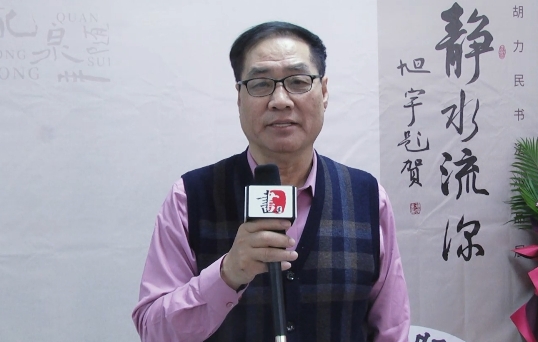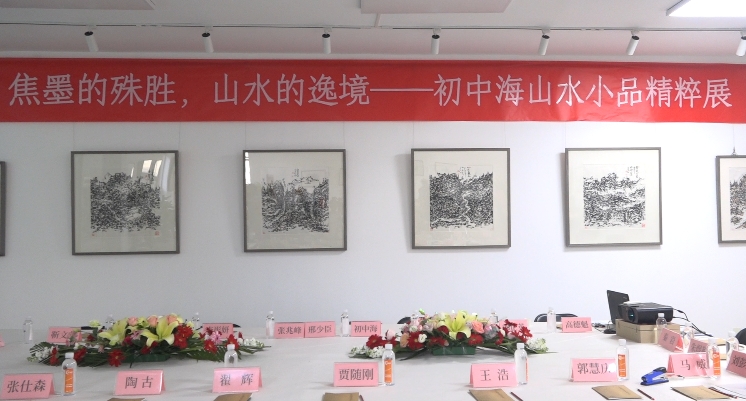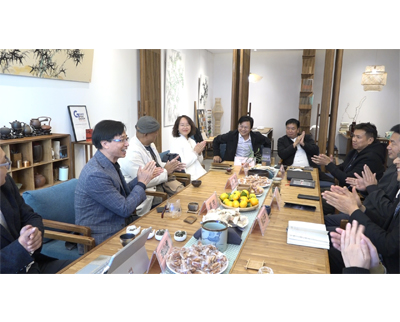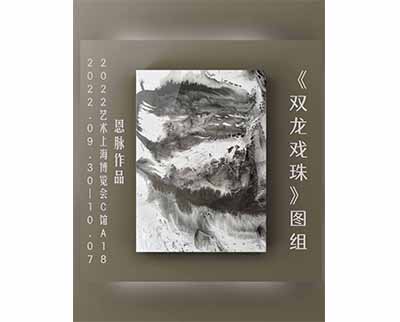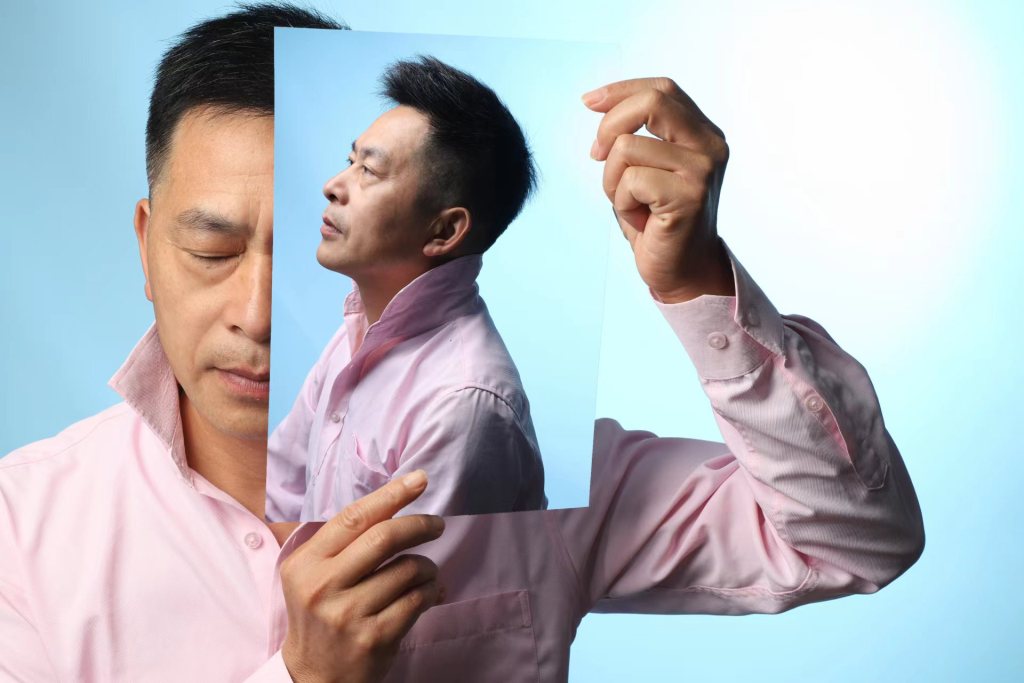David Brubaker(America)
大卫·布鲁贝克(美国)
Famous Chinese Culture Researcher
Scholar and Professor of Hubei University
美国著名中国文化研究者
湖北大学访问学者、教授
Energies of Culture in Creation:
Contemporary Life with Art Canton
创造中的文化力量:艺术广东的当代性
By David Brubaker
文|大卫·布鲁贝克
Art Canton 2018 shows that Chinese culture is growing in unique and globally momentous ways. Curator Wu Shaoning describes his strategy in his catalogue essay, “Kinetic Energy in Art Canton”: The aim of this commercial platform is to accelerate appreciation of contemporary art as a positive spiritual power. The curatorial premise is that contemporary art can contribute to the vibrant scene of Guangdong arts and help cultivate ideas and feelings needed to sustain twenty-first century society inside China and out. The Canton Contemporary Art Fair is a community of talents who co-create the culture needed to meet contemporary human needs. The founders understand markets, artists explore actual or foreseeable paths of life, and art lovers of all ages who actually live the contemporary reply to the ideas and feelings that artists send and communicate.
2018艺术广东的举办显现出中国文化正在以独特方式向全球渗透。本次展览的图录上刊登了总策展人武少宁的一篇文章《动能与艺术广东》,其中写到了武少宁的独特见解:艺术广东致力于将人们对当代艺术的审美发展为一种积极的精神力量。武少宁认为,当代艺术可以为广东艺术的蓬勃发展做出贡献,并有助于培养中国人在21世纪所需的思维与情感。艺术广东· 当代艺术博览会是人才的聚集地,他们共同创造了满足当代人类所需的文化养分,展览的创始人鲁晓昆了解这个市场,她知道艺术家正在探索实际的或未来可行的道路,而所有年龄段的艺术爱好者实际上是在通过这些当代艺术来回应艺术家的想法和感受。
For four days, Guangdong has a role in cultural growth for China and for human beings world-wide. What gives each human life a place for vital and incomparable creativity in the present? What source of value in contemporary life is authentic enough to regulate material progress so that unique individuals can choose to live together humanely and in unity with nature? Today, in art fairs like this, China has an historic chance to create and project thoughtful cultural responses to the wonders and problems that modernity produces.
在这四天中,广东在中国以至全世界人类的文化发展中发挥着积极的作用。 是什么赋予人类生命中一个可以在当下展现自己无与伦比的创造力的地方?当代生活中是什么来反映现实物质的进步,以使得独特的个体可以与群体及自然和谐共处?今天,在这个艺术博览会上,中国有一个历史机遇,以文化的角度来对现代生产活动的思考及问题作出一个经过深思熟虑的回答。
Innovation and Tradition
创新与传统
Wu Shaoning notes that even though interest in Guangdong for contemporary art is growing, many people still wonder whether it can bring benefits to collectors and society. He observes that sometimes markets, academic voices in the humanities, and public opinion join to protect art ecologies inside China that support familiar artistic interpretations of traditional Chinese art. Continuing on, he suggests that some may have a preference for Ling Nan painting. curatorial idea is that people committed to what is unique and distinctive about Chinese art, including those who support Ling Nan painting, will also appreciate contemporary art when they explore and investigate it. Is this premise correct? Could it be that core features of Chinese aesthetics that are basic to the popularity of Ling Nan paintings are also among the features that give contemporary art in China a spiritual power of the sort that Wu Shaoning mentions? Yes.
武少宁指出,尽管广东人对当代艺术的兴趣正在增长,但许多人仍然怀疑当代艺术作品是否能给收藏家和社会带来好处。他发现,当市场、学术探讨、和公众舆论开始探讨中国艺术生态保护时,那些人就会支持中国传统艺术的诠释。但是,有些人或许会偏爱岭南画派,而当人们讨论对与中国艺术来说真正独一无二、与众不同的艺术时,在探讨当代艺术的过程中,那些原本支持岭南画派的人也会被当代艺术所吸引。这个设想是否正确呢?难道中国美学的核心特征便是岭南绘画流行的基础,也是武少宁提到的赋予中国当代艺术精神力量的特征之一吗?很明显是的。
To appreciate how the energy of contemporary art at Art Canton is in harmony with traditional culture, it is helpful to recall Ling Nan painting. This school of painting shows that it is possible for artworks to affirm the uniqueness of Chinese aesthetics, even when they show absorption of compositional elements of style from abroad (e.g. 19th century realism and the colors of Impressionism). How do Ling Nan paintings remain authentic? One answer seems to be philosophical: they satisfy core aesthetic principles of Chinese ink-wash shanshui painting.
要了解艺术广东中的当代艺术文化是如何与传统文化相协调的,从岭南画派开始思考或许对我们有帮助。这个学派表明,中国的艺术作品可以体现出中国美学的独特性,即使它们借鉴了国外的艺术元素(例如19世纪的现实主义和印象派的色彩)。岭南画作如何保持原汁原味?有一个看似哲学性的回答:这些作品满足了中国水墨山水画的核心原则。
By doing this, they lead the individual human beholder to recall and cherish how the uniqueness of direct acquaintance by eye reveals the unity of human individuality and natural environment. This particular feeling of oneness between the individual human being and nature cannot be explained by absorption of Italian Renaissance perspective or Impressionist color, because those two European models of art represent the perceptual experience of objects and colors as existing externally in the natural environment. Direct unity with nature is represented more effectively by formless images that display surface areas of emptiness. In other words, Ling Nan painters work in accord with Chinese shanshui aesthetics and principle of qiyun shengdong.
这样做可以引导人们重新思考并珍惜通过眼睛所看到、认识的事物的独特性,同时揭示人类个性与自然环境的统一。人类与自然之间的这种特殊联系不能通过借鉴意大利文艺复兴时期的艺术创作或印象派的色彩来解释,因为这两种欧洲艺术模式体现了在当时环境下对物体和色彩的感知和体验。通过各种无形的图像更能有效、直接地体现出人类与自然的直接统一。换句话说,岭南画派作品符合中国山水美学气韵生动的原则。
One of the discoveries at Art Canton is confirmation that many contemporary artists in China are now innovating with core principles of traditional Chinese aesthetics. Chinese aesthetics conveyed in a contemporary way produces an energizing spiritual power suited to human needs. The power of this new art must not be misdescribed as the mere conducting of variations on the theme of modern or late-modern Euro-American models of art. Done with skill, the technique of obscuring familiar forms resembling mountains and waters can be a way to increase formlessness and the impact of areas of emptiness that produce feelings of unity with the vitality of life. This emerging art is neither abstract expressionism that conveys psychological arch-types nor late-modern conceptual art that tries to eliminate human individuality as a means for constructing an understanding of facts about systems.
我在艺术广东·当代艺术博览会中发现并证实,中国许多当代艺术家都在中国传统美学的基础上进行创新,这种以当代艺术表现中国美学的艺术向人们传达积极、充满活力的精神力量。这种力量不应被误解为仅仅是对现代或后现代欧美艺术模式的变化,还有通过模仿使山脉和水域变得无形和飘渺的技巧,来令作品充满活力的同时相互协调。这种新兴艺术既不是为了传达心理的抽象表现主义,也不是试图消除人类个性作为理解系统事实手段的现实主义。
So, the curatorial thesis is strong. Art Canton is a catalyst for the exploration of new avenues for contemporary art. At the same time, this art fair exhibits familiar representational paths for experimenting with shanshui painting. This helps to maintain an open atmosphere of careful appreciation that supports continuity with traditional Chinese aesthetics. As a result, the visitor is provided with a balance of cues that encourages creativity in interpreting each of the contemporary artworks on exhibit. This project of exploration in art is well suited for its context: Guangdong today.
因此策展人武少宁的文章很有说服力。艺术广东是探索当代艺术新途径的催化剂,同时,也展示了山水画创作的代表性。这有助于保持开放的审慎氛围,支持和传承优秀中国传统美学。艺术广东还为访客提供了语音导览等一系列作品介绍方式,为观众解释展览中的每件当代艺术作品,这种新型的讲解方式迎合了它的背景——今天的广东。
Energy and Art
能量与艺术
The best way to appreciate the energy at Art Canton Contemporary Art Fair is to visit each artist and talk about art. With so many artworks worthy of attention, it is useful to consider a representative sample of the artists who confirm the success of the strategy of synergy through diversity. While these artists use a variety of materials, they often seem to utilize frameworks of traditional Chinese aesthetics as a guide for enlivening contemporary compositions and projects. Also fascinating is the inclusion of work by international artists who have moved to China. Using contemporary techniques learned abroad, they create a sympathetic energy that reflects their absorption of the atmosphere of material growth and Chinese philosophy that co-exist here today.
要了解艺术广东·当代艺术博览会作品的最佳方式是与每位艺术家交谈。有这么多值得关注的艺术作品,了解艺术家的代表作是非常有必要的,他们通过多样性的协调统一来证明自己的绘画。虽然这些艺术家使用各种材料来创作,但他们似乎常常利用中国传统美学的框架作为当代艺术作品的成功标准。同样吸引人的是,这次艺术广东·当代艺术博览会还展出了许多外国艺术家的作品。通过借鉴外国艺术家的创作技巧,他们创造了一系列作品,表现出外来文化与中国哲学共存的和谐景象。
The artist Wei Ligang explains in conversation at Art Canton how he balances ink-wash with formless areas of paper to remind the beholder of the unity with nature that leads to an awareness of natural beauty. With Universal Things Examine, he creates an arrangement of unreadable characters; nonetheless, he still affirms the sensibility of natural beauty characteristic of Chinese calligraphy and ink-wash painting.
艺术家魏立刚在艺术广东·当代艺术博览会的论坛中介绍了他如何把握在纸张上运用水墨作画,以提醒人们注意作品与自然的统一和对自然美的认识。通过对他作品《万物察-秋》的了解,我们可以知道魏立刚创造了一系列我们没法看懂的文字,尽管如此,通过这些文字仍然可以体现出魏立刚对中国书法和水墨画美感的肯定。
How? He accomplishes this because his approach still activates or brings life to the formless space displayed on paper between the wiry but non-objective strokes. Wei Ligang says this artwork is a spiritual resource for a journey at the core of individuality that can be appreciated universally by human beholders. This fits traditional aesthetics; for the formless space of the paper resonates with each beholder’s memory of direct acquaintance with nature by eye. This art is something more that abstract images that result from psychological drives. Wei Ligang’s approach also differs in a fundamental way from the unreadable but structurally distinct characters of the 1980s explored by Wu Shanzhuan, Xu Bing, and Gu Wenda.
这是怎么做到的呢?魏立刚之所以能够实现这一点,是因为他的方法可以使纸上的东西“活”过来,而这些活力都显现在饱含力量的笔划之间。魏立刚说,这些艺术品都是一种精神资源,能够彰显人类的精神核心,被人类普遍认可。他的作品符合传统美学,因为这些作品使每个观众都能通过参观直接认识自然并产生共鸣,这种艺术更像是唯心主义的抽象图像。魏立刚的创作手法与吴山专,徐冰和谷文达截然不同,他们更多的是探索20世纪80年代那些令人难以理解且结构独特的人像。
He Xiaochun’s Blind Walkways (2016) is a contemporary composition that conveys insights about paths of life amid urban construction. Her painting is about social issues that arise in the built environment, memories of loss and isolation, finding a balance of feeling and steps forward, and maintaining connection with traditions of cultural practice. In a catalogue available at Art Canton, He Xiaochun describes some social issues raised by this painting: newly constructed walkways include a narrow path of tactile bricks so the blind can navigate in the urban environment. The painting displays shapes resembling the raised tread of such bricks and an enveloping emptiness of grey; the image is one of immediate tactile-contact within a surrounding texture that shows no perceptible objects. The whole becomes a metaphor for a blind path where surrounding scaffolds of memory disappear and the harmony of society is still an unmet human need.
贺晓春的作品《盲目之道》是一件立足现代的作品,向人们传达了城市建设中的行人路径。她的绘画注重那些社会环境中出现的令人觉得失落和孤立的问题,以寻求感知与进步的平衡,并与传统文化保持联系。贺晓春在艺术广东的图录中介绍了自己的作品,反映了一些新的社会现象:新建的人行道配备有盲人专用的通道和路径,使盲人可以在城市中自由行走。这幅画作的主体形状类似于盲人专用通道那些凸起的地砖,而这被大量的灰色围绕其中,画作的主题还带有纹理,表示那些不可显示和感知的对象。这样整体构成了对盲人专用道路的隐喻,当周围的景象都消失时,社会仍旧不能满足人类的需求。
Yet, this mixed-media painting of oil and ashes gives a hint that cultural balance may still be possible: the boundless grey leads the beholder to recall direct acquaintance with an immediacy of space that is inseparable from the vitality of natural life. Attention to the charm of this non-objective space of actual life, which cuts across memories, may provide a unifying force of life – or an actual image of the vitality of life -- that gives the individual human beholder the courage to go on, as He Xiaochun suggests. Given her references to Buddhism, it seems the formless field of grey moves the beholder closer to the charm of vital unity with the natural environment in a way that differs from somewhat similar paintings by Mark Rothko. Rothko writes about expressing emotions of human tragedy but not about the unity of touch with the natural environment or fusion by eye with the visible landscape. Blind Walkways suggests contemporary art of a new sort that coheres with traditional aesthetics. From formless ashes of incense at the root of suspended temporality, the liveliness and uniqueness of actual life is still open and available to each of us .
然而,这种运用了大量灰色来描绘的画作暗示了人们在不同艺术之间也是可以平衡的,平铺整幅画作的灰色使得观众轻易回想起人类与自然生命密不可分的联系。注重这种跨越认知、非客观的现实生活空间,可以为我们的生命提供力量,而这或许是生命活力的实体形象,使人类有更多的勇气继续前进,正如贺晓春所说,鉴于她对佛教的认识,无形的灰色区域会令观众更愿意接近、理解、体验自然环境。这种方式与Mark Rothko有些相似的绘画风格不同,Mark Rothko的画主要表达人类悲伤的情绪,而不是关于自然环境的统一与眼睛可见景观的融合。《盲人之道》这幅画提倡一种与传统美学相结合的新型当代艺术,从无尽的灰色中我们可以知道,现实生活的活力和独特性仍然是开放的,并且为我们每个人所用。
The polished metal surfaces of Qi Yafeng’s sculptures also suggest that contemporary artworks at Art Canton express aesthetic principles of Chinese culture. This is evident when one of the convex polished and reflective surfaces of Uncountable Holes is examined carefully: the reflective surface shows a mirror image of the beholder standing at a distance, and the surface also resembles a transparency with an image of the beholder behind in deep space. Thus each individual surface area supports two alternating interpretations: it presents the appearance of a formless surface, and it presents a mirror image of forms and motions in the real physical space of the beholder. Then Qi Yafeng places the solid that displays all these double-aspect reflective surfaces on top of a drum with a mirror finish of its own that reflects the space surrounding the solid above.
戚雅峰雕塑作品的抛光金属表面也表明艺术广东的当代艺术作品表达了中国文化的美学原则,当人们仔细观察《无数的洞》的其中一个凸起抛光和反射表面时,这是显而易见的。这件作品会反射站在附近的人们镜像,而这件作品看上去更像是透明的,会让人觉得自己像是漂浮在深空中一样,因此,每一个单独的表面区域都可以有两者相互交替的解读:这个作品呈现了一个无形的表面,而这恰恰可以倒映出观察者在现实物理空间中的形态和运动状态。随后,戚雅峰特意设计成将这些反射的镜像倒映在作品的顶部,而这个作品本身便有一个镜面,可以反射实体周围的事物。
The result is a sculpture that represents the interconnectedness of three different dimensions : first, the solid displays an image of immediate surface that differs from the appearance of the moving forms that it supports. Second, it displays a mirror image of the forms, structures and motions of external natural phenomena. Third, the image of the solid displayed on the surface of the drum suggests that the solid is within a larger reality that is not directly shown in the images displayed by the surfaces of the solid. Does this communicate that nature, the natural environment, and the intrinsically human are one? How different this is from Constantin Brancusi’s Bird in Flight series of the 1920s that represents an actual bird in flight as the reality of motion.
而这样做的结果,便是一个雕塑作品就可以表达出三个不同维度的相互联系:首先,这件作品可以反映出了一个与倒映物外貌不同的图像;其次,它体现了外部自然现象的形式、结构和运动状态;最后,作品表面上反映的图像表明,即便这个物体需要占用现实更大的空间,倒映在作品上也仅仅是一个图像而已。这是否传达了自然本质上其实是和人类是一体的呢?这与Constantin Brancusi在20世纪20年代创作的《飞行中的鸟》系列有所不同,因为这个系列是直接将一只实际飞行中的鸟作为运动的参照对象的。
The Fair also encompasses installation art, a category that Wu Shaoning plans to emphasize in coming years. In Art Canton 2018, two striking installations are exhibited as one: Chen Zhao’s Crack and Yu Hongbin’s Impact (2018). This witty piece of idea-art is meant to communicate a danger that is real: an impending collision between hi-tech human culture and ecosystems of living creatures on planet Earth. On the one side, Chen Zhao crafts a cluster of shielded electronic eyes of the sort used to check the identify of individual human beings. On the other, Yu Hongbin creates the power of nature represented by a great whale that is followed by many others. The problem is that the eyes of hi-tech human culture are no longer able to recognize any portion of nature that is not already rationally understood and managed for human benefit.
这次展览还包括大型装置艺术作品,策展人武少宁计划在未来几年的展览中都强调这一类别的展出。在2018艺术广东,两个引人注目的装置共同展出:陈昭的《咔嚓》和余洪斌的《撞击》。这个独特的创意艺术作品旨在警示人们一个现象:高科技的人类文明正与和地球生物系统发生碰撞。一方面,陈昭制作了一套人脸识别系统;另一方面,余洪斌创造出反映大自然力量的作品,一条巨大的鲸鱼紧随其后。反映出的问题是,高科技下人类只凭借眼睛不再能够发现自然中任何尚未被研发的事物以造福人类。
Thus, in reaction to human destructiveness, the whale of natural life is about to collide with currently existing human civilization: impact and crack. The theme here is that the modern European idea that nature is the pupil of human reason is now causing late-modern malfunction. For Chen Zhao, the aim is to awaken the human art audience to the fact that this collision is already happening; and Yu Hongbin, the maker of the whale, describes it as a warning of what is to come if the human species does not change course. Again, nature and the human are one: the natural environment is inseparable from human beings who have a responsibility to cultivate harmony with it.
因此,作为对人类破坏性的反应,自然生命之鲸将会与现有人类文明发生碰撞:撞击和破裂。这件作品的主题是,现代欧洲人认为人类瞳孔是认识自然的根据,而这种观念却会导致后现代探索能力的下降。对陈昭来说,他创作这件作品的目标是提醒观众这种碰撞已经发生;而《撞击》的创作者余洪斌将自己的作品描述为一个警告,如果人类物种不改变自己的处事方式,那么就会发生人类无法掌握的事情。自然和人类是一体的,他们是不可分割的,人类有责任和义务与自然和谐相处。
The energy exchange at Art Canton also inspires international artists who have come to China. It is part of Wu Shaoning’s program of synergy to bring Chinese contemporary artists working in ink-wash or other materials together with artists originally from abroad. One motivation for this is to promote opportunities for open exchange of techniques, materials and compositional ideas that might energize artists who have the experience of growing in the art circles of China. Another reason is to encourage artists from cultures outside China to experiment and expand in the atmosphere of innovation that is characteristic of China now.
艺术广东同时也激励了许多来中国生活的外国艺术家,这是策展人武少宁所有策划中的一部分,他特意将专注水墨绘画或其他类型作品的中国当代艺术家与外国艺术家聚集在一起。这样做旨在为艺术家提供一个中外交流艺术技巧、材料和创作理念的机会,这可能会激励中国艺术家有所思考并发展;另一个原因则是鼓励来自国外的艺术家能在中国特有的创新氛围中进行实验和拓展。
Talk with international artists in the exhibition makes it plain that inspiration works both ways. One example of the excitement is evident in the work of Danial Kocev Pazamat, an artist from Macedonia who describes Asian philosophy as an influence. He creates large canvases that express the principle of constant change and the interdependency of all things. This thesis that the elements of the cosmos are connected and interrelated is a feature of traditional Chinese aesthetics, a point emphasized by contemporary Chinese philosophers of environmental aesthetics . To give another example , Australian painter Dani Green is now exploring non-objective compositional schemas for conveying the relationship between nature and human beings; she describes both Art Canton and conversations with Chinese artists as inspirational. One hundred years ago, artists in Guangdong used features of compositions originating from Europe to modify traditional Chinese painting. Today, artists from abroad are inspired by the atmosphere and aesthetics of Chinese art and culture to enliven contemporary art from abroad.
在展览中与国际艺术家交谈,可以清楚地看出艺术家的创作灵感是双向的。来自马其顿的艺术家Daniel Kocev Pazamat的作品是一个很好的例子,他将亚洲哲学描述为一种影响,他创作了大型油画,来表达了万物处在不断变化状态的原则。本篇文章始终认为宇宙的各种元素都是相互联系和相互影响的,同时这也是中国传统美学的一个特点,当代中国的哲学家也强调了这一点。再举另一个例子,澳大利亚画家Dani Green正以探索非客观的构图模式来传达自然和人类之间的关系,她认为,参与艺术广东、与中国艺术家谈话都是鼓舞她的事情。一百年前,广东的艺术家通过借鉴欧洲作品的特点来创作中国传统绘画,今天,来自国外的艺术家受到中国艺术和文化氛围的启发,来创作他们自己的当代艺术。
Incubator for Creativity
创造力的孵化器
All the artists at Art Canton are researchers who take on the responsibility of exploring the feelings and ideas of individual human beings in the present, so each of us becomes more practiced in finding a steady space for launching a new and specific life to shape the course of community and objective history.
艺术广东的所有参展艺术家都是研究人员,他们肩负起探索目前人类感知和想法的责任,因此,我们每个人都要努力为开启新的特定生活而寻找一个更稳定的地方,来塑造全新的人类生活和历史。
The Art Canton Contemporary Art Fair is now an incubator for cultural creativity in the Guangdong region. It shows that contemporary art is consistent with the interest is authenticity that powers the domestic art market in China. Following Wu Shaoning’s metaphor, we can think of Art Canton as an economic investment with risks, just as it is risky to launch expensive vehicles into outer space. The long term commitment to launching communications satellites is justified by the foreseeable benefits. Similarly, support needed to build an ecosystem of art – curators, artists, critics, audience, investors – is worth the labor, because each step strengthens Guangdong as a center for the development and globalization of the aesthetics of unity with nature and the vitality of life that circulates within Chinese culture and philosophy today. Guangdong gives traction to ideas and feelings that can spark a global advance.
艺术广东·当代艺术博览会是广东地区的文化创意孵化器。这场展览表明,当代艺术是符合中国艺术市场的审美标准的。 根据武少宁的比喻,我们可以将艺术广东·当代艺术博览会视为一项有风险的经济投资,就像将一辆昂贵的车辆投放到外太空一样危险,不像发射通信卫星一样可以预见将会到来的收益。同样,建立一个艺术生态系统——策展人,艺术家,评论家,观众,投资者,所获得的支持令我们觉得都是值得的,因为当今,中国文化和哲学中的每一步行动都将广东作为发展和全球化的中心,人类生活和自然之间的联系越加紧密。广东是一个牵引,这些想法都将引领时代进步。
Wei Ligang “Universal Things Examine”
魏立刚 《万物察-秋》
He Xiaochun “Blind Walkways”
贺晓春 《盲目之道》
Qi Yafeng “Uncountable Holes”
戚雅峰 《无数的洞》
Yu Hongbin "Impact"
余洪斌 《撞击》
Chen Zhao "Crack"
陈昭 《咔嚓》
Daniel Kocev Pazamat "Disconnected"
丹尼尔 《断联》
Dani Green "Trust"
丹尼.格林 《信任》
-
城韵华彩正青春——八位青年画家的东莞文艺新实力联展盛大启幕
2025年9月13日上午,由东莞市文学艺术界联合会、东莞文学艺术院主办的“东莞文... -
“以梦为马——刘长静个人作品展”盛大开幕,艺术之梦绽放宋庄
“以梦为马——刘长静个人作品展”盛大开幕,艺术之梦绽放宋庄 -
从荆浩画院到荆浩东方艺术奖:华鼎奖集团的文化战略布局
-
城韵•华彩——东莞青年画家美术作品联展开展
由东莞市文联、东莞文学艺术院主办的2025年“东莞文艺新实力”展览展演扶持项目“... -
重识巨匠:许铁生与中国现代艺术的南洋之路
2025年8月,《重识许铁生》展览于新加坡品艺画廊隆重开幕。这是自20世纪80年... -
展讯 | 以梦为马——刘长静个人作品展
以梦为马——刘长静个人作品展将于8月23日在京与观众见面


